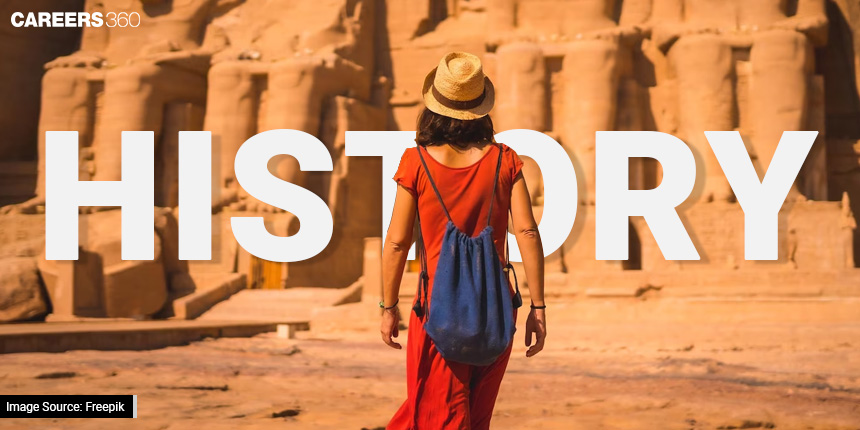Discover How To Make Learning History Easier
Students often consider history as a boring subject. Memorising the list of dates of the king's reign, their battles, and administrative changes, their lineage can be quite cumbersome for students.

But History is not as dull as it sounds, it is probably the way we all have been trying to learn it that has made the subject very monotonous. Here are a few ways that students can follow to make studying and learning history fun and easy.
Highlight Essential Historical Information
Yes, going through the black-and-white textbook or your handwritten notes can be less stimulating and tedious. It's easier to remember and focus on information in the form of bullet points or important words which are highlighted. With this trick, retention of topics becomes easier.
If you’re reading Indus Valley Civilisation highlight the time period 2600-1900 BCE, art forms like “Dancing Girl”, names of cities like Harappa, Ganeriwala, Mohenjo-Daro, Dholavira, Kalibangan, Rakhigarhi, Rupar and Lothal. So even while you are flipping pages, you will notice the highlighted words and remember the important points related to the chapter.
Also Read-Competitive Exams That Students Can Ace With UPSC Prep
Visual Cues For Memory Recall
Visual cues make learning history easier by turning complex facts into easy-to-remember images. Visual imagery has a long-lasting impact on the human mind. For example, if you mark landmark events of India's freedom struggle, you can later refer to it and revise them just at a glance. Pictures, diagrams, and maps help students to understand historical facts better. It's a simple yet effective way to grasp history.
Create Timelines
History is a story of interconnected events. Memorising every detail of each and every event independently is tough instead you can make a timeline to remember the dates chronologically. If you put your mind to it, a timeline can help you remember the entire Indian independence movement through the timeline.
For instance the very first Mutiny of 1857, formation of the Indian National Congress in 1885, the various uprisings against the British Raj to more modern incidents like Jallianwala Bagh massacre of 1919. If you can connect the timeline with the story you will be able to connect and recollect historical events.
Also Read-Understand How Diagrams Can Add Value To Your Answers In Exams
Mind Maps
Mind maps can put entire complex data of history into easy-to-grasp visuals. Mind maps is basically writing down a central idea and then branching out related ideas from the main idea.
If the main idea is religions that spread in India like Buddhism. The student can branch out related ideas with the main concept of Buddhism. This might include branches like origins, texts, contributions, etc., under one head. The student does not need to read the chapter again but can revise everything in one place.
History Videos
It's not necessary to study history in traditional methods of listening to lectures and memorising answers. Combining movies or documentaries with textbooks can take the learning experience to the next level. Biopics are usually a good example on the lives of important figures in Indian history. They can provide a good understanding of how the person was, their personality, beliefs, and their role in India’s freedom struggle.
But movies and documentaries can just complement the reading experience and not be replaced with textbooks.
Create Memorable Rhymes or Sentences
Mnemonics make memorising boring information fun. Create rhymes or sentences to encapsulate historical dates. You can create their own mnemonic devices to remember the hierarchy of kings who ruled or presidents who served etc.
5 Ws and 1 H Principle
You can split historical events into basic questions of what, when, where, who why and how. Answers to these questions can give you a complete understanding of historical concepts. For example, the Sepoy Mutiny of 1857 (Indian Rebellion of 1857). Students can categorise
Causes: The introduction of the new Enfield gun with lubricated cartridges by the British insulted religious beliefs,
Effect: The Sepoy Mutiny, which began in May 1857 with mutinies among Indian soldiers (sepoys) across the country, sparked a massive revolt against British rule.
Consequences: The British suppression of the mutiny resulted in important changes in Indian administration, including the end of East India Company rule and the beginning of direct British rule in India, known as the British Raj.
Also Read-Public and Private Sector Employment: Things You Should Know
Innovative strategies can make history captivating but students cannot quit the active method of memorising history. History demands attention. These are tricks and tips for making the learning process easier but this is not an alternative to reading and memorising information. Along with memorising, it is important to take sample papers and mocks for history. Solving practice tests builds confidence and familiarity with exam formats.